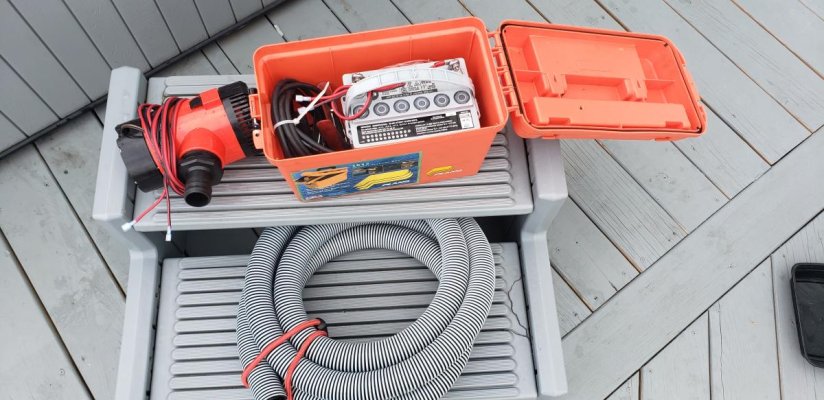Pump in a bucket?,Great thought starter
I have been wondering for a long time about emergency bilge pumps.
I thought that I had settled on a small powered pump either petrol or diesel until yesterday that is.
A friend anchored not far from me went on holidays, I looked across whenever coming on deck, never anything amiss.
Until.... The bow was very low in the water.
Long story short,:
Arrived at boat - locked of course but I had come prepared with cordless grinder and crow bar.
Entered boat water was lapping at pilot house sole, waist deep in forward cabin.
It went down hill from there.
Frantic phone calls to supposed help, coast guard, water police, harbour master boat yard etc, none would help! The water police said they would come on Monday to check the situation. The coast guard said they would be hours away (5/6?)
If only I had my emergency pump!
10 or 12 other boats nearby but no one came to help, one crew actually Dinghy’ed past but did not stop as they had dinner plans.
Ended up with 2 pumps at a supposedly 66,000 lph each (yes, 25,000 gph)
Pumps managed to get water levels down after about an hour.
So, why am I telling you all of this?
The lesson for me is that in spite of my own extensive equipment on board they all depend on some of my systems functionality being available and I had nothing to save a disabled boat.
I could not start their engine or generator quickly, as not familiar, trying to get the owner to give instructions was difficult.
Bailing with a bucket was not practical.
Now that I’m sitting here looking at the empty spot I am pondering what sort of emergency should I be contemplating for my own boat and what assistance can be realistically offered to others.
My conclusion for today is an electric pump and small generator and smooth bore hose twice as long as my worst case scenario.
The pump and hose will be in is own sealed and marked container and the generator will be placed and used periodically to supplement the main genny, maybe to run a small air con overnight.
This gives me a useful emergency system independent of my boat systems, can quickly be explained to someone, on the phone for instance, and is low cost to put together.
I have never been inside an actually sinking boat before, but clear thinking is critical for safety.
First: stop and think for a minute or two.
Evaluate the situation, if it’s too late it’s too late.
Put life jackets on, this tells your head that it’s a serious situation.
Use a quick release bend to tie your dinghy on, you might need to get off quickly.
If you have others with you communicate constantly until things get under control.
Bottom line- It might be ok for the captain to go down with the ship but no point others.
No doubt others will have other views on what’s best, this is just my ramblings.
Oh, I did manage to save their boat by the way, and it was towed and lifted out in the middle of the night.

